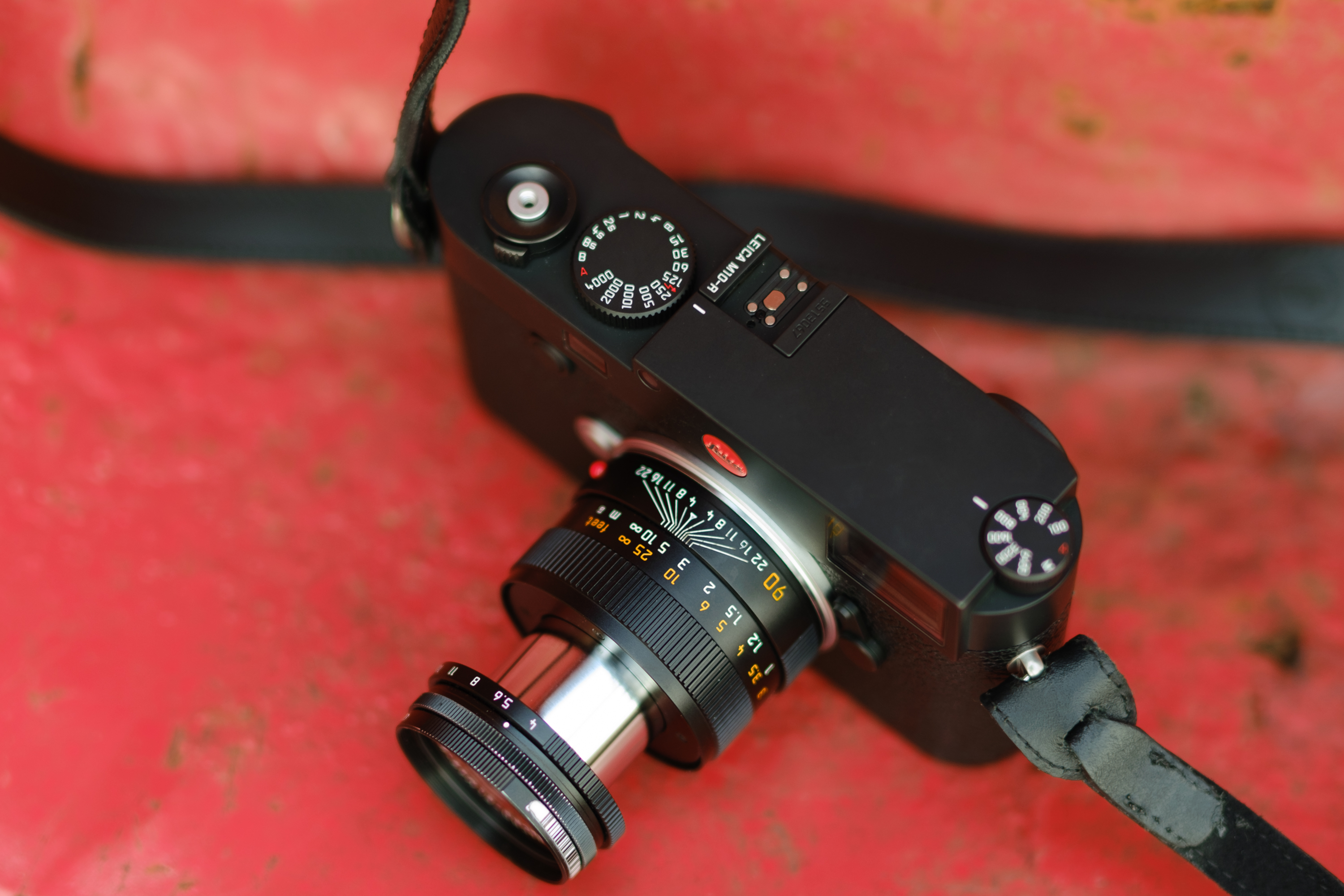The Leica M system has several great portrait lenses. The Leica Macro Elmar 90mm f4, however, is often overlooked. While it doesn’t have the f2 of the Summicron, this 90mm is incredibly tiny, focuses in closer, and comes in a little less expensive. The build is a bit different than most M mount lenses, with a collapsable design that also helps the lens achieve infinity focus.
You can view this article and much more with minimal ads in our brand new app for iOS, iPadOS, and Android.
Macro photographers will need to play close attention to that spec sheet, however. The lens needs the macro adapter to get in real close. Even then, the lens has only 1:2 reproduction ratio. What the Leica Macro Elmar 90mm really excels in, however, is portraits. I shot a portrait session with this 90mm lens, and here’s what I found.
Table of Contents
Too Long, Didn’t Read
The Macro in the name of Leica Macro Elmar 90mm is a bit misleading. But, even without the macro adapter, this lens is a great portrait tool with marvelous color and beautiful yet controllable flare. It’s also super tiny and incredibly well built.
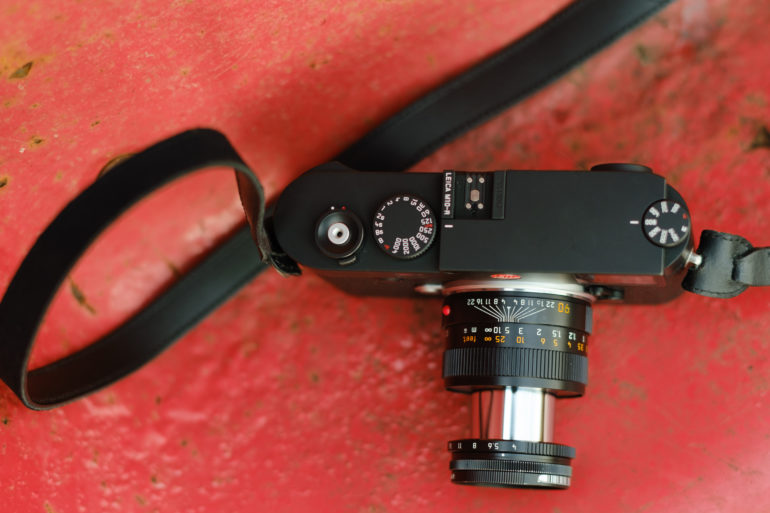
Leica Macro Elmar 90mm Pros and Cons
Pros
- Compact and lightweight
- Compatible with macro adapter
- Easy to lock in focus
- Focuses close enough for headshots, making it a great portrait option
- Great color
- Sharp centers
- Beautiful, controllable flare
Cons
- Reproduction ratio is only 1:6.7; a macro adapter is needed for 1:2
- Collapsible design and push pull focus means a little more to learn
- Softer edges
- No weather sealing
- Expensive
Gear Used
I used the Leica Macro Elmar 90mm with the Leica M10R and a Leica UVa II filter. I did not use the macro adapter with this lens.
Innovations
The Leica Macro Elmar 90mm is the M-mount system’s smallest 90mm lens. Longer focal lengths and metal lenses tend to be heavy and large. But this 90mm weighs just over eight ounces and only takes up about two inches of real estate in a camera bag.
Leica Macro Elmar 90mm Tech Specs
Lensrentals lists the following tech specs for the 90mm f4:
| Angle of View | 27° |
| Autofocus | Manual Focus Only |
| Brand | Leica |
| Diameter | 2.3″ |
| Dimensions | Length: 2″ |
| Filter Size | 39.0mm |
| Focal Length | 90.0-90.0 |
| Groups/Elements | 4/4 |
| Hood Included | Yes |
| Image Stabilization | No |
| Item Type | Lens |
| Lens Type | Normal Range |
| Max Aperture | 4.0 |
| Maximum Reproduction Ratio | 1:6.7 |
| Minimum Aperture | 22.0 |
| Minimum Focusing Distance | 2.6feet |
| Mount | Leica M |
| Weight | 0.5 lb. |
Ergonomics
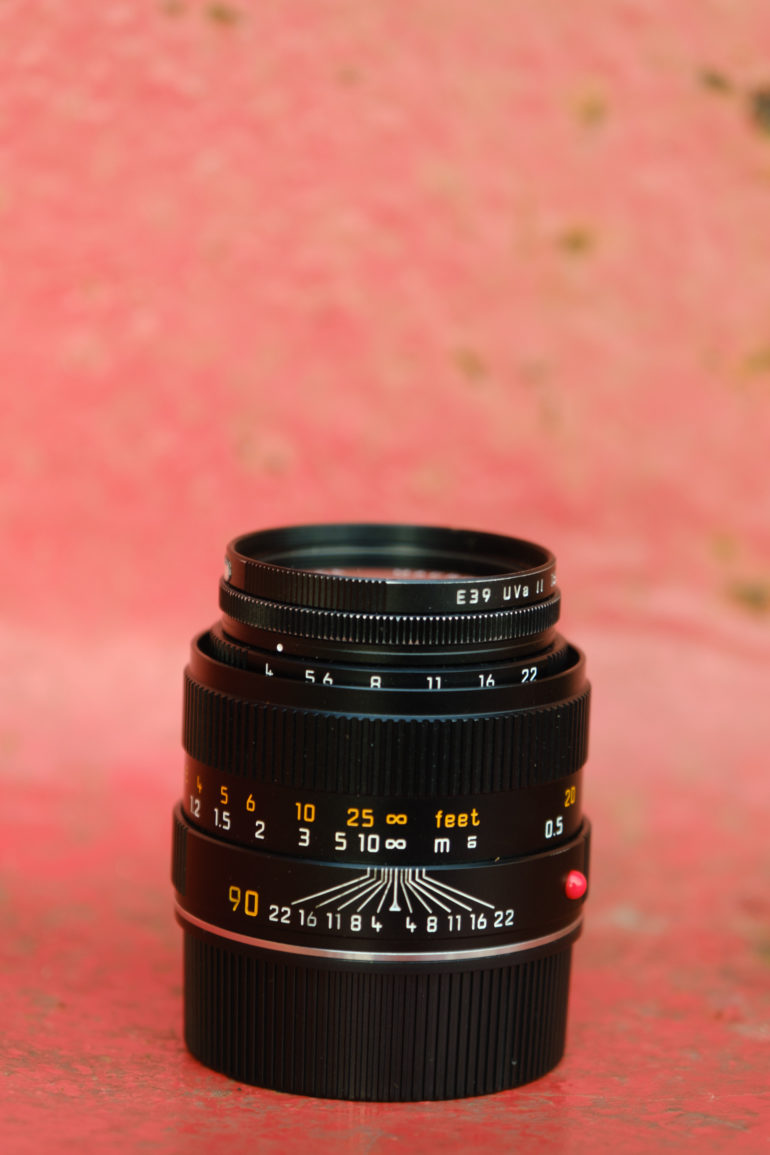
When I first pulled the Leica Macro Elmar 90mm out of the box, I thought they had sent me the wrong lens. Surely, the tiny metal lens must not be a telephoto. I was wrong — Leica has indeed managed to fit a mid-telephoto focal length into a lens that folds down to just over two inches long. The lens is also narrow and doesn’t widen from the size of the M-mount itself. Despite a metal build, it weighs just a touch over eight ounces.
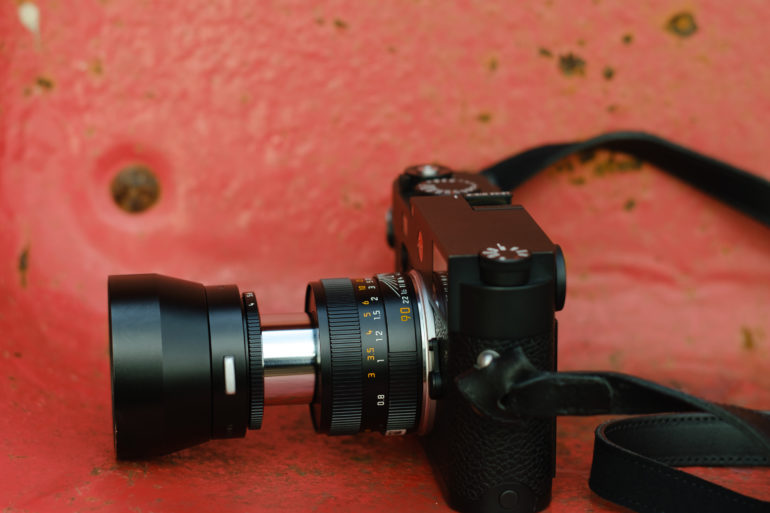
The Leica Macro Elmar 90mm is collapsible. This is both for size reasons and function, as pushing the lens back in slightly allows the lens to focus at infinity. The front of the lens pulls out, exposing a thumb-width of a metallic silver barrel. The lens can then be locked in this position with a clockwise turn to the front.
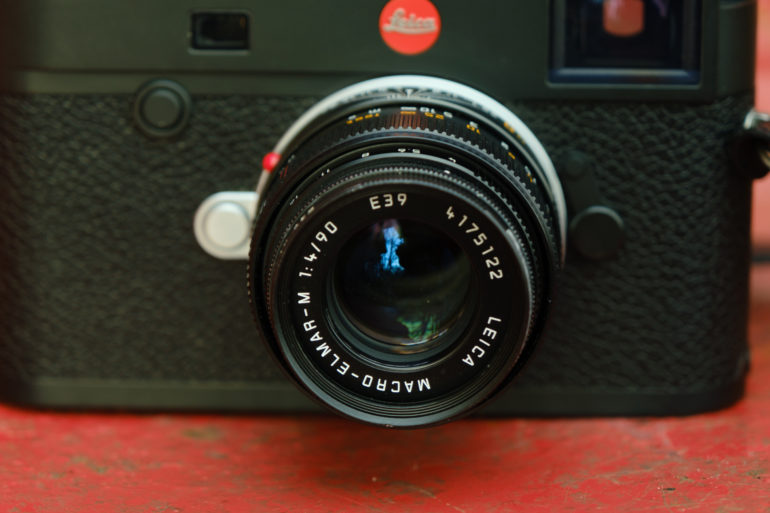
The front of the lens accepts 39mm filters. Moving the front of the lens towards the mount, the tiny aperture ring is just as narrow as the metal edges of a Leica filter. The ring turns with a satisfying click. It’s easy to use, so long as you remember to twist-lock the front of the lens so that doesn’t also try to turn when adjusting the aperture.
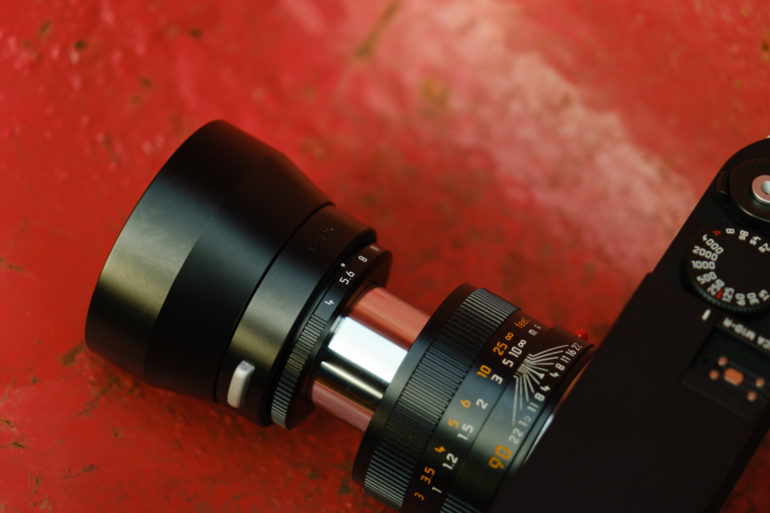
After that sliver of silver that extends from the lens is the focus ring. This has the classic look of other M-mount optics with a depth of field scale and focal length indicators with feet noted in yellow and meters in white. A second depth of field scale is on the bottom of the lens, spanning from 22 to 30 inches. This is for using the lens with the macro adapter, particularly with bodies that don’t offer focus peaking.
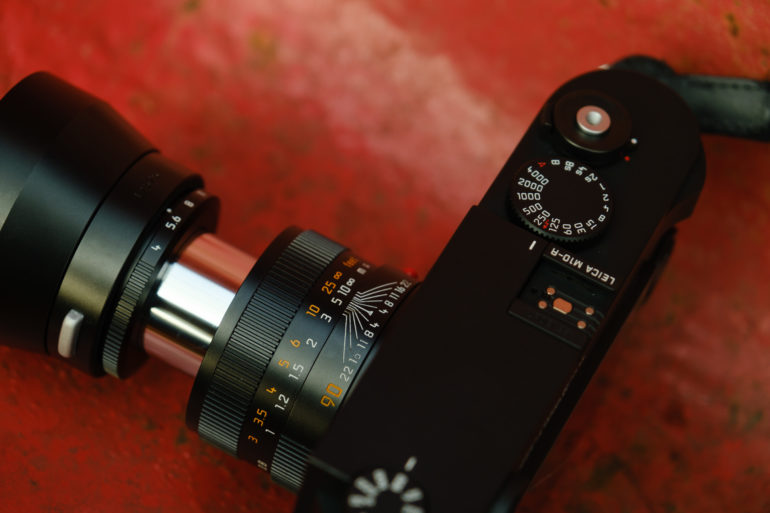
Leica lenses have sparked a love for metal optics and the Leica Macro Elmar 90mm is no different. It feels great to use and there’s such a different feeling manually focusing with a classically styled metal lens. The small size does mean that the lens rings are smaller. And, you have to place your hands just so to avoid blocking the rangefinder on the Leica M-10R. But, I spent much of my time with this lens outdoors in 30-degree weather with gloves on. After a brief adjustment period, I could grab the correct ring without pulling the camera away from my eye.
The lens ships with a locking metal hood.
Build Quality
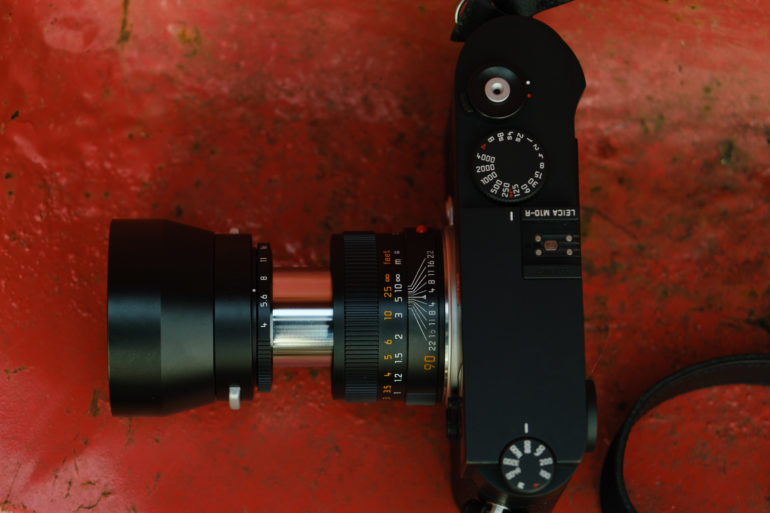
The Leica Macro Elmar 90mm feels like every Leica I’ve ever held — which is another way of saying it’s built like a tank. The metal construction both adds to durability as well as the classic look and feel. I can feel the slightest indent when running my hands over the lettering on the lens. That suggests the numbers are etched, which should also help create a longer lifespan. The lens I tested was a rental and yet it looked brand new.
Leica doesn’t say whether or not their lenses are weather-sealed. But, we’ve beat them up before in the past. The part of the lens that would be most likely to cause issues is the collapsible feature. Could fine dust and sand get in between the barrel and scratch up that pretty silver and make turning less smooth? I can’t really say. And I’m not about to go drop a $4,000 lens in a sandbox to find out. I’m certainly not worried about the build quality of this lens over normal use. But Leica’s lenses that don’t collapse could potentially have a slight advantage here.
Focus
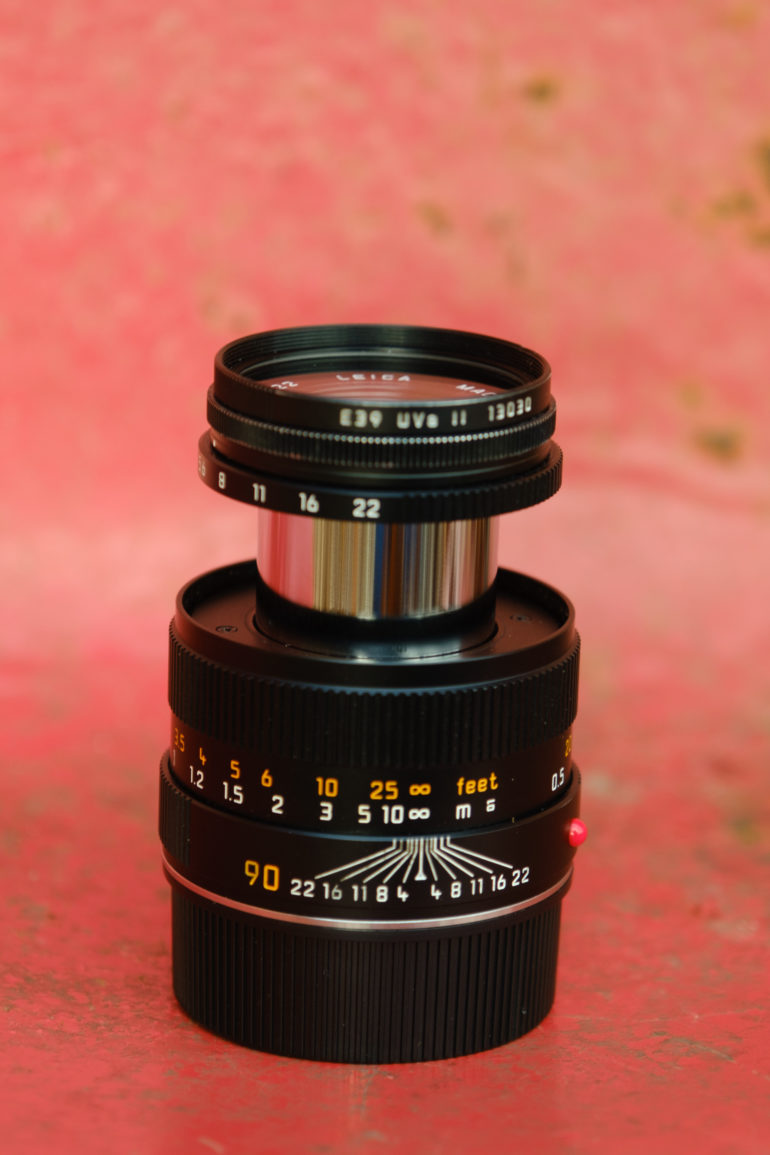
Like the rest of the M system, the Leica Macro Elmar 90mm is a manual focus lens. But, it does focus a bit differently than other lenses in the series. The focusing ring turns smooth and is easy to use. But, to get the focus locked on infinity, the front of the lens pushes back in, retracting slightly, to lock focus in the distance. Still, as an f4, the lens was easier to get in focus wide open than Leica’s 90mm f2.
But, the Macro in the name is a bit of a misnomer. Leica calls the lens a Macro, but, unaided, it creates just a 1:6.7 reproduction ratio. It needs to be paired with the Leica Macro-Adapter-M and even then it’s a 1:2 reproduction ratio.
However, the 90mm f4 does focus about .6 feet closer than Leica’s 90mm f2. The lens wouldn’t be my first choice for taking macro shots of flowers, for example. But, it can get in nice and close for headshots.
Ease of Use
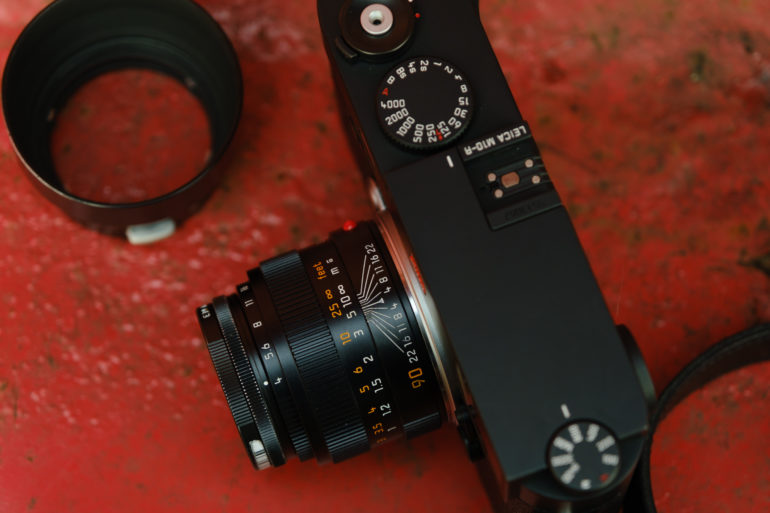
I’ve used a handful of other M-mount lenses before this. All of them require patience as a manual focus system. The Leica Macro Elmar 90mm adds a bit more to learn beyond this. Depending on where you want to focus, you may have to use both the focus ring and push-pull the front of the lens out. It’s not difficult to learn once you play with it and have that “aha!” moment as you play with pushing the lens in and out.
As an f4 lens, I found the Leica Macro Elmar 90mm easier to get in focus than the brighter Leica lenses that I’ve worked with. I’m a beginner when it comes to the Leica system, but focusing the f4 lens was easier than working with the f2. I spent much of my time working with live view and focus peaking, but I was able to get shots in focus using the rangefinder as well. I still had many shots out of focus as a newbie to the manual focus rangefinder system. But, compared to a brighter lens, getting sharp shots was a less taxing.
The Leica M system is one that requires patience, but it also rewards patience.
Image Quality

There’s an intrinsic quality to Leica lenses that’s difficult to put a finger on exactly. Pixel peepers can certainly find an almost technically perfect lens for less money. But, the images from the Leica Macro Elmar 90mm have a feel to them that’s as luxurious as the construction. Images are sharp at the center when patiently focused and a little soft at the edges. As a lens that’s also compatible with film bodies, images shot with the M-10R and this lens still have the echoes of analog.
Bokeh

The 90mm focal length and closer focusing capabilities make up for the fact that this lens is just an f4. The backgrounds are still pleasingly soft, with a gradual fade. Sure, the backgrounds are even softer with the Leica Summicron 90 f2. But, they still have a great quality to them.
Points of light are soft, without a bubble effect. Wide open, points of light are rendered into soft circles. Stopped down, these points of light appear closer to a decagon than a circle. At the edges, bokeh doesn’t have as extreme of a cat eye effect as many lenses tend to — it’s there, but not extreme.
Sharpness
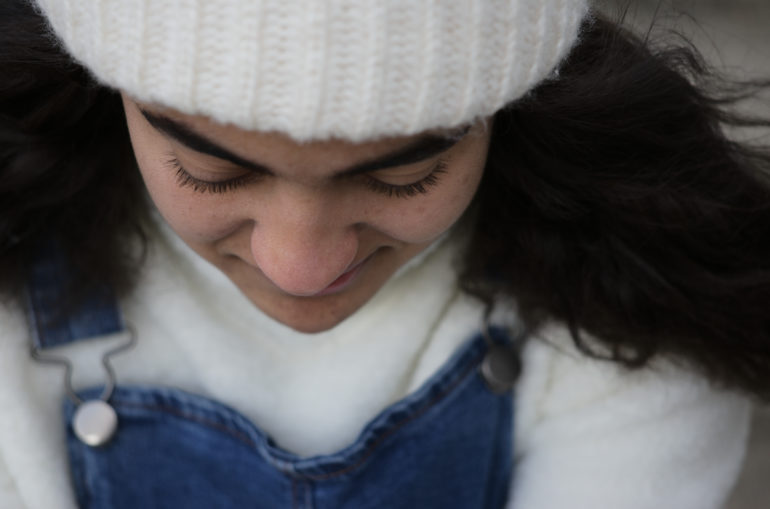
When perfectly focused, the Leica Macro Elmar 90mm is tack sharp at the center. The edges and corners are a bit soft wide open but sharpen as the aperture narrows. That sharpness fades to a nicely softened background. Getting a sharp, perfectly focused shot is tricky, though significantly easier than a brighter lens.
Lens Character
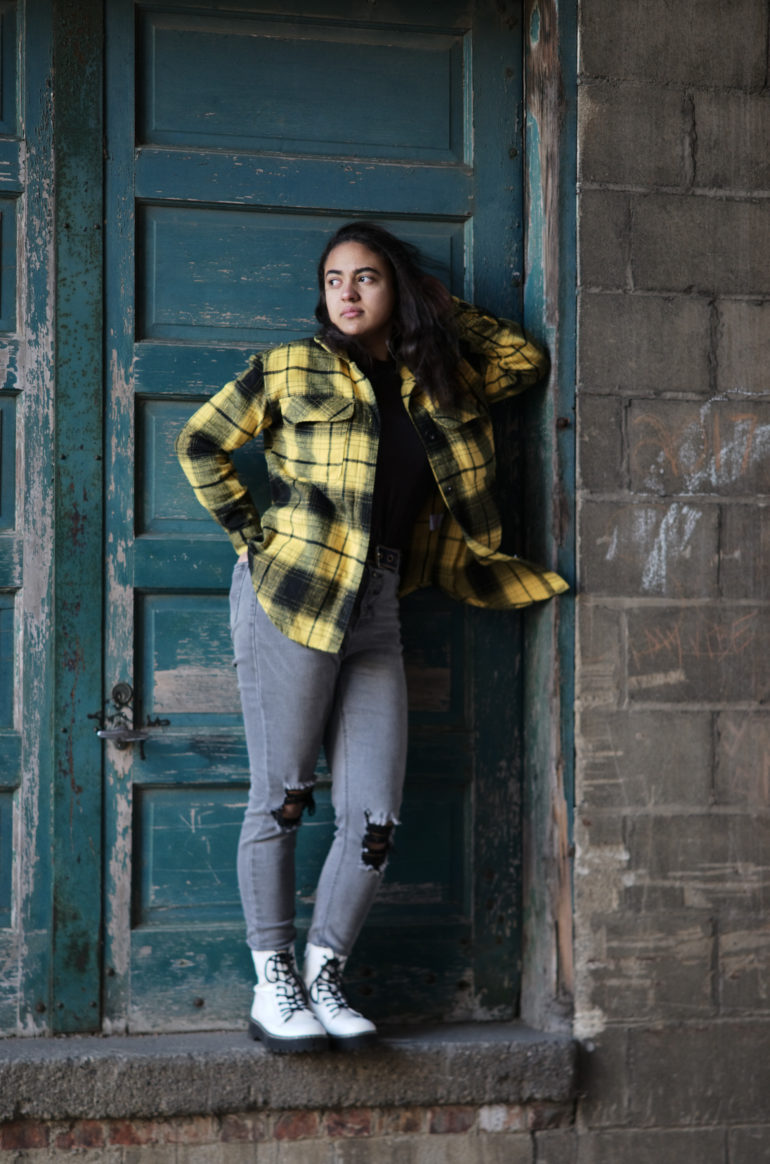
The classic styling of the barrel of this lens seems to somehow seep into the images itself. Images have a sort of texture to them. There’s a great mix of sharpness to soft backgrounds here. I also didn’t spot any overwhelming chromatic aberration. Lines don’t appear to bend dramatically and vignetting was minimal.
Pointed directly at a light source, the lens didn’t create overwhelming flare or dramatically reduce contrast. But, if you place the light on the edges of the frame, you get a nice soft, dramatic flare. Think the kind of soft flare photographers are creating with a graduated circle filter in Lightroom, only 100 times better because it’s the real thing. The ability to choose flare or no flare by adjusting the position of the lens is great for creative versatility.
Color Rendering

The colors coming from this lens are richly contrasted, yet not overly saturated. If anything, the colors are slightly undersaturated. That creates a great classic look to the JPEGs from the M-10R. Light flare doesn’t obliterate the color and I didn’t spot any overwhelming color fringing.
Extra Image Samples
From day one, The Phoblographer has been huge on transparency with our audience. Nothing from this review is sponsored. Further, lots of folks will post reviews and show lots of editing in the photos. The problem then becomes that anyone and everyone can do the same thing. They’re not showing what the lens can do. So we have a section in our Extra Image Samples area to show edited and unedited photos. From this, you can make a decision for yourself.
Edited











Unedited
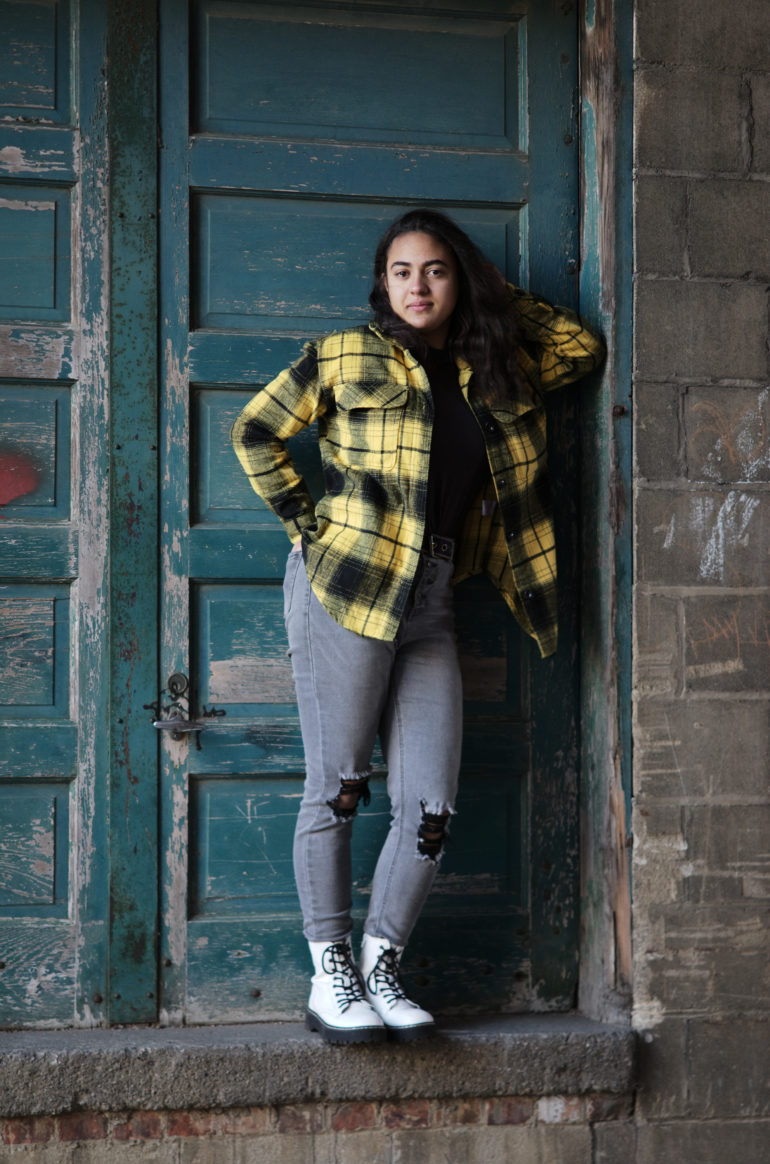
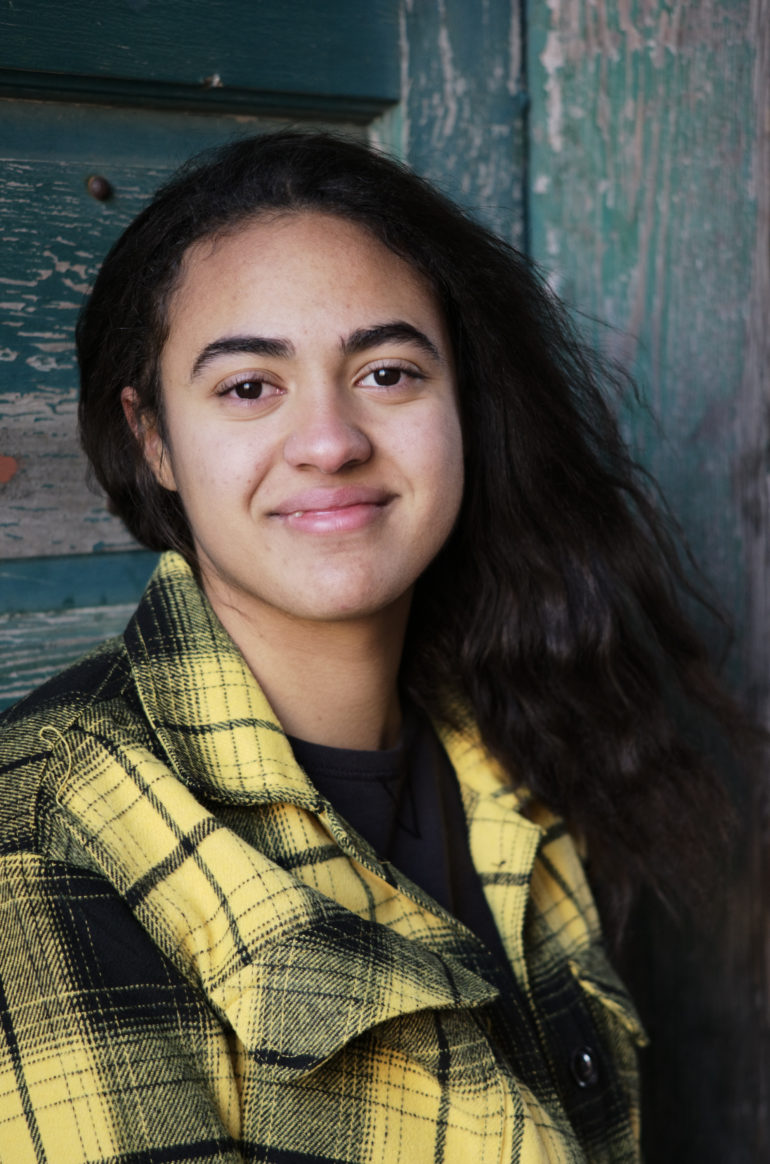






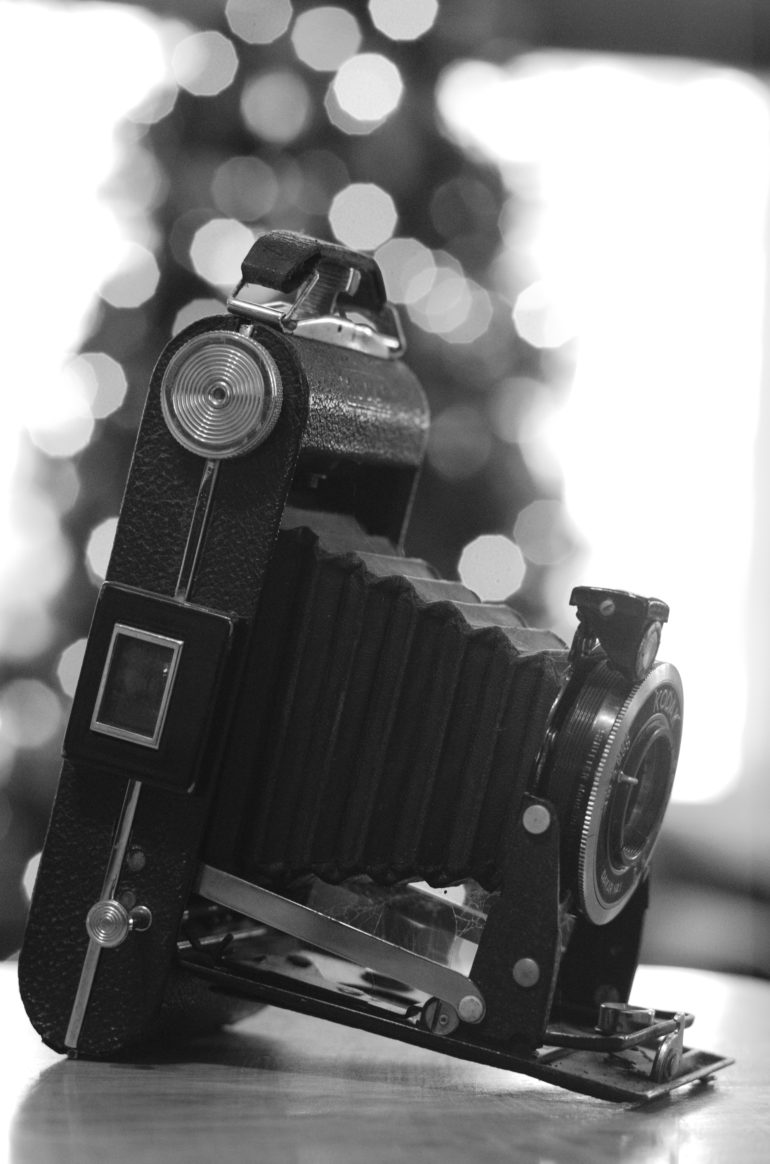
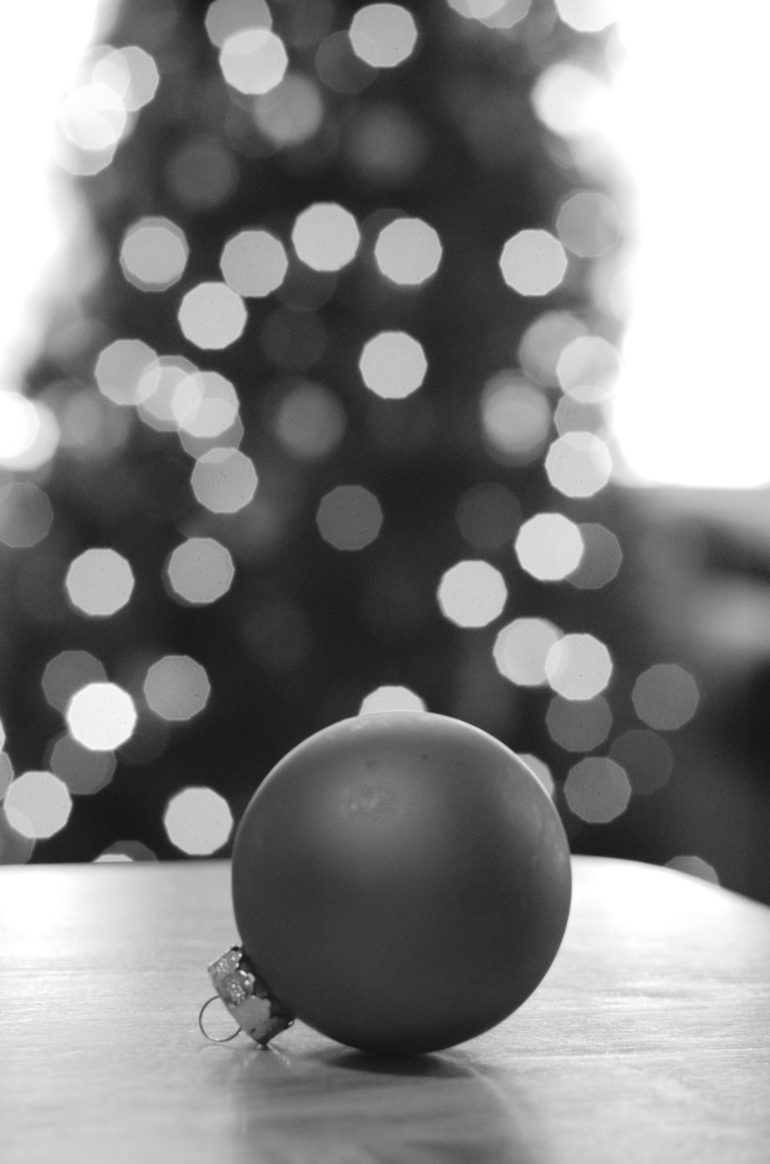




Conclusions
Likes
- I love how tiny this lens is. It’s actually cute.
- It’s made for use with Leica’s macro adapter.
- At f4, it’s easier to lock in focus wide open.
- Even without the macro adapter, it focuses in close enough for headshots.
- The colors are beautiful.
- It’s sharp at the center.
- The flare is easy to control: to add when you want it and eliminate it when you don’t.
Dislikes
- It’s not really a macro lens by the standard 1:1 definition.
- The edges are soft.
- The collapsible design increases the learning curve.
- There’s no weather sealing.
- It’s luxuriously priced.
The Leica Macro Elmar 90mm shouldn’t be overlooked just because it’s an f4. The lens is a tiny yet beautifully made optic. It has the build of a classic Leica M mount lens, yet a unique collapsible design that also helps achieve focus at infinity. Images have a classic feel to them, with rich contrast and undersaturated colors. The centers are sharp, the edges soft, and there’s the option to either control or create beautiful, soft flare.
But, the Macro in the name is a misnomer. The lens alone only has a 1:6.7 reproduction ratio. It’ll need the macro adapter for super close photos and even then shoots at a 1:2 — and macro purists will say a true macro lens starts at 1:1.
While the Summicron 90mm f2 will bring in more light and softer backgrounds, the Leica Macro Elmar 90mm will get in a bit closer and offer a bit easier time getting perfect focus wide open. It’s also incredibly tiny.

I’m giving the Leica Macro Elmar 90mm four out of five stars. Want one? Check it out at LensRentals and Amazon.


